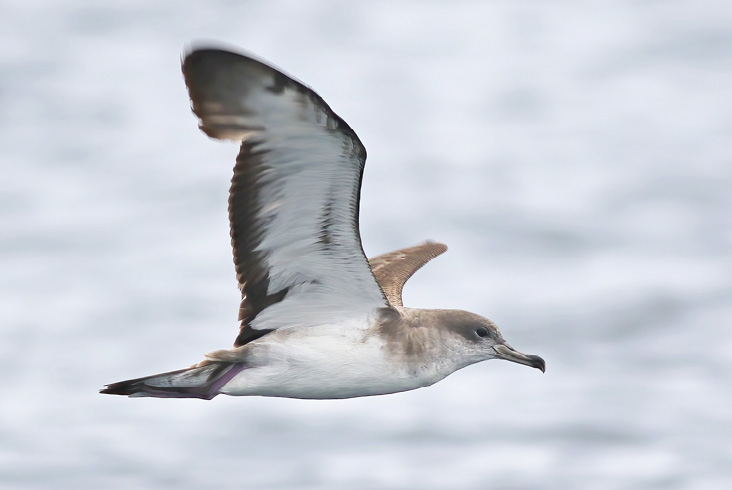Jeremiah Trimble, Peter Trimble Sr., Ian Davies, Julian Hough, and Nick Bonomo

A close-up of the Cape Verde Shearwater shows many of the features that contribute to the identification of this bird. In particular, note the bill’s thin structure and dusky coloration, which differ significantly from the brighter, stouter yellow bills of Cory’s/Scopoli’s Shearwater. Photograph by Peter Trimble, Sr.
At sunrise on Friday, August 12, 2022, we boarded Nick Bonomo’s 20-foot vessel the Ardenna and departed Saquatucket Harbor in Harwich, Massachusetts, for points east. The main goals of the day were to explore for pelagics while saving time to search the shorebird areas around South Monomoy. We compiled a wishlist of rarities. Jeremiah offered his prediction for the day’s highlight: Cape Verde Shearwater—a lofty goal. It turned out that we did not have to wait long to see this mega-rarity—a first for the waters off Cape Cod and Massachusetts.
Skies were overcast and winds were light as we rounded Monomoy Point toward the productive waters east of Chatham. Though not heavily covered by birders, this nutrient-rich area between the Gulf of Maine and the Nantucket Shoals always seems to have something to offer between birds, cetaceans, and other pelagic creatures. At their best, these waters are teeming with marine life. This day’s experience was very bird-centric. Hundreds of shearwaters, storm-petrels, gulls, and terns were scattered over a broad swath of water about three to five miles offshore. There were no massive tight flocks. Rather, the tubenoses were following scattered topwater-feeding fish. The calm waters were perfect for spotting whales, dolphins, or sharks, but surprisingly we had none of those. The only fin we saw belonged to an ocean sunfish (Mola mola).
To view the rest of the article you'll need to
subscribe. Bird Observer publishes original articles on birding locations, on avian populations and natural history, on regional rarities, field notes, field records, photographs, and art work.